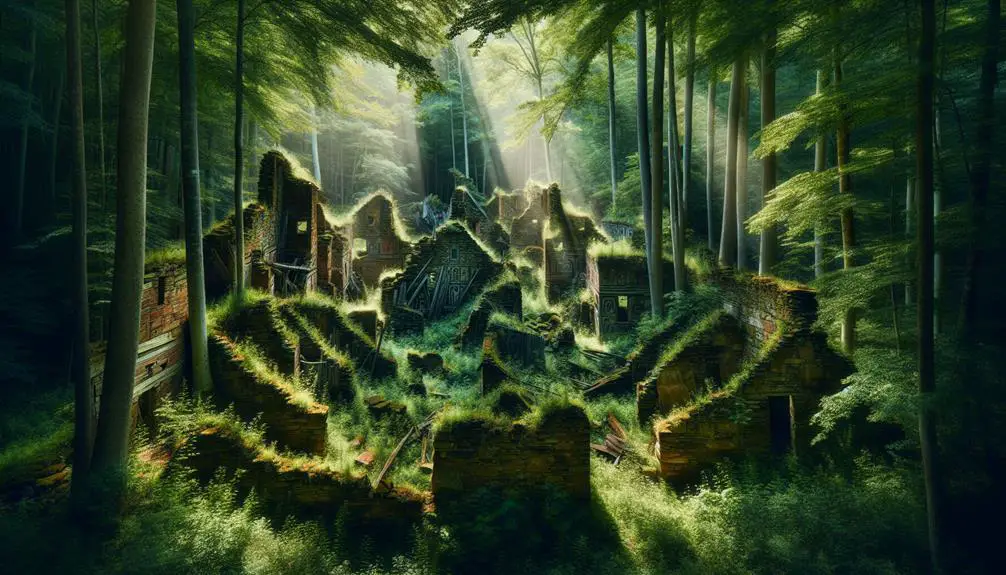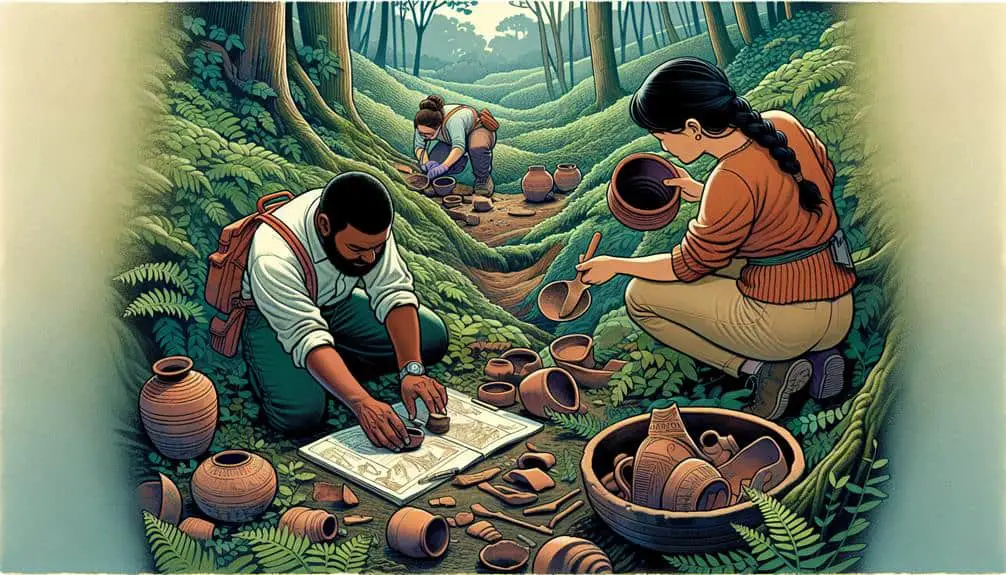Preserving Native American tribe remains in ghost towns involves delicacy and cultural respect. It's vital to collaborate with tribes for meaningful preservation. Upholding the cultural identity and involving communities ensure a respectful approach. Ethical restoration prioritizes ancestral sites and environmental protection. Technological tools aid in documenting and conserving ghost towns for educational purposes. Respecting the significance of these sites is critical for future efforts. Further insights await on the challenges, cultural preservation, collaborations, ethics, and conservation practices in Native American remains preservation.
Key Points
- Collaborate with tribal communities for respectful preservation.
- Prioritize cultural significance in restoration projects.
- Incorporate traditional knowledge and perspectives.
- Ensure active involvement and consent from tribes.
- Use sustainable practices for conservation efforts.
Challenges in Preserving Native American Remains
Preserving Native American remains in ghost towns poses significant challenges due to the delicate nature of these historical artifacts. When it comes to these remains, ethical dilemmas often arise for archaeologists. Balancing the need for scientific exploration with the respect for Native American beliefs and traditions is no easy task. Archaeological practices must be conducted with the utmost care and consideration to guarantee that the remains are treated with the dignity and reverence they deserve.
Navigating these challenges requires a deep understanding of the cultural significance of these artifacts. It's essential to approach the preservation of Native American remains in ghost towns with sensitivity and a willingness to engage in meaningful dialogue with the tribes whose ancestors are being studied. By actively involving Native American communities in the decision-making process, archaeologists can work towards a more ethical and respectful approach to the preservation of these invaluable historical resources.
Importance of Cultural Preservation Efforts
Cultural preservation efforts play an essential role in honoring and safeguarding the rich heritage of Native American tribes in ghost towns. These efforts are vital to guarantee that the cultural heritage and historical significance of these tribes are respected and preserved for future generations.
Here are three key reasons why cultural preservation is important:
- Maintaining Cultural Identity: By preserving artifacts, traditions, and stories from Native American tribes in ghost towns, cultural preservation efforts help uphold the unique cultural identity of these communities.
- Educational Value: Cultural preservation efforts provide valuable educational opportunities for people to learn about the history, traditions, and way of life of Native American tribes that once inhabited these ghost towns.
- Respect for Ancestors: Preserving the cultural heritage of Native American tribes in ghost towns is a way to show reverence for the ancestors who lived in these areas, honoring their legacy and contributions to history.
Collaboration With Tribal Communities
To truly honor the heritage of Native American tribes in ghost towns, fostering collaboration with tribal communities becomes a cornerstone for meaningful preservation efforts. Cultural partnerships and community engagement are essential in guaranteeing that the preservation of Native American tribe remains respects their traditions and values. By actively involving tribal communities in the preservation process, a deeper understanding of the historical significance of these sites can be achieved.
Establishing cultural partnerships with tribal communities allows for a more holistic approach to preservation, incorporating traditional knowledge and perspectives. Community engagement ensures that the voices of the tribes are heard and respected throughout the preservation efforts. This collaborative approach not only strengthens the bond between the tribes and the preservation teams but also guarantees that the preservation work aligns with the cultural beliefs and practices of the Native American communities.
Ethical Considerations in Restoration Projects
Have you considered the ethical implications of restoration projects within Native American ghost towns? When engaging in these endeavors, it's important to navigate the ethical dilemmas that may arise and make sure that the restoration process is respectful and mindful of the community's values and beliefs.
Here are some key points to keep in mind:
- Respect for Ancestral Sites: Prioritize the preservation of Native American ancestral sites within ghost towns. These sites hold cultural and spiritual significance for the community and should be treated with the utmost respect.
- Informed Consent: Seek active involvement and consent from the tribal communities whose heritage is intertwined with the ghost town being restored. Their input is invaluable in guiding the restoration process and making sure that it aligns with their cultural practices and traditions.
- Sustainable Practices: Embrace sustainable restoration practices that not only conserve the historical integrity of the site but also protect the environment and natural resources surrounding it. Community involvement in decision-making can help ensure that these practices are in harmony with the land and its heritage.
Future of Ghost Town Conservation
Respecting the ancestral significance of Native American ghost towns is essential as we look to the future of conserving these historical sites. Embracing sustainable practices is vital in ensuring that these sacred grounds are protected for generations to come. By implementing environmentally friendly strategies such as using renewable energy sources, practicing responsible waste management, and promoting biodiversity, we can safeguard the integrity of these sites while minimizing our impact on the environment.
Moreover, technological innovations play a pivotal role in the future of ghost town conservation. Advanced tools like drones, 3D scanning, and virtual reality can aid in documenting and preserving these sites with precision and accuracy. These technologies not only help in creating detailed records for research and educational purposes but also provide a non-intrusive way to explore and experience these ghost towns virtually.
Frequently Asked Questions
How Do Archaeologists Determine if Human Remains Found in Ghost Towns Are of Native American Descent?
When determining if human remains in ghost towns are of Native American descent, archaeologists use various methods. Respect cultural sensitivity and ethical considerations by consulting with tribes, analyzing artifacts, and DNA testing for accurate identification.
What Steps Are Taken to Ensure That Tribal Communities Are Actively Involved in Decisions Regarding the Preservation of Ancestral Remains?
To guarantee community involvement and cultural sensitivity in preserving ancestral remains, steps are taken to engage tribal communities actively. This involves respectful consultation, honoring traditions, and prioritizing their input in decision-making processes.
Are There Any Specific Rituals or Ceremonies That Are Performed When Native American Remains Are Discovered in Ghost Towns?
When native American remains are discovered in ghost towns, specific rituals and ceremonies often honor their cultural significance and traditional practices. Ethical considerations and community involvement guide respectful handling, ensuring ancestral reverence.
How Do Preservation Efforts Impact the Overall Sense of Identity and Connection to the Past for Tribal Communities?
Preservation efforts play a crucial role in shaping identity and strengthening connections to the past for tribal communities. Impact on culture is profound, fostering community involvement and collective pride in heritage preservation.
Are There Any Legal or Regulatory Challenges That Arise When Attempting to Preserve Native American Remains in Ghost Towns?
When preserving Native American remains in ghost towns, legal challenges and regulatory obstacles often emerge. Maneuvering these complexities requires diligence and respect for cultural heritage. Understanding and addressing these issues is essential for successful preservation efforts.



